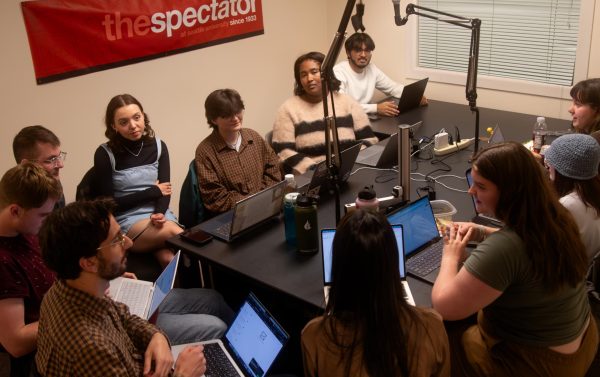Taxes for Dummies, a.k.a. College Students
Tax Day is fast approaching, a dreaded day as recognizable in American culture as the Fourth of July. Landing on April 17 this year, Tax Day is the date by which all people with income in the previous year are required to file their income with the Internal Revenue Service (IRS).
Seattle University Finance instructor David Carrithers recommends that students get into the habit of filing now, while their taxes will most likely be relatively simple.
“If a student can get used to doing it now when it’s not complicated, then as their life gets a little bit more complicated, they just have to step up a little bit at a time in terms of what they know about ling taxes,” he said.
Though there are no formal services on campus to help students through their taxes, Carrithers said that a trip to the fifth floor of Pigott may be helpful in finding a student or advisor to assist. He emphasized that students should take care while filing so as to avoid a slip up.
“The first thing is just don’t be careless, take your time and make sure the forms are filled out correctly,” Carrithers said. He added that this is where an online tool would be helpful, as it will tell the student if anything is missing or filled out incorrectly. Online options also offer various prompts throughout to maximize possible deductions.
Senior Finance and Accounting major and President of Seattle U’s accounting and finance information system club Beta Alpha Psi, Ashley Do, has already filed her taxes using TurboTax and said that she felt fairly comfortable with the process. Do also said that she sees a need for tax resources for students and is hopeful that once Beta Alpha Psi has more members, the club could offer free services for students who have tax questions.
“I think that would be a helpful resource to start implementing, but of course you need the infrastructure,” she said, “You need the volunteers who are knowledgeable about that kind of stuff.”
Sophomore Humanities for Teaching and History major, Allison Wagner, has not filed before, but would start with an online resource when approaching taxes. She would also like to see resources on campus for tax help.
“I feel like there are places on campus that would do it, but if they would advertise it and maybe bring someone in to explain things to us, that would be good,” she said, “We’re here to learn and that would be nice to learn normal stuff.”
To file, students can either use an online resource such as TurboTax or print out tax forms and mail them to the IRS. Carrithers said that first-time filers should probably start online, as those services will walk the user through filing, and online services will typically be very inexpensive or free for students.
The basic setup of ling is the same whether students utilize an online source or mail-in forms: first report all sources of income, then report any deductions and lastly pay any taxes file or accept any refunds available.
Most working students, apart from consultant workers, will receive a W-2 form from their employer(s) by the end of January. This form will show total annual income from that employer and the withholding amounts. Students may also receive a 1099 form if they have any investments. Though there is no official record of it, students should also report casual sources of income such as tips or childcare.
The majority of students receive a refund a er ling because the withholding amount (the taxes, social security and Medicare payment the employer takes out of their paycheck) is higher than the tax percentage that the student’s income for the entire year will fall into. When filing, the IRS or the online service would see that the student does not actually need to pay taxes, or needs to pay less, resulting in the money that was withheld being refunded.
If a student has any deductions, such as children or charitable contributions, these would account for the difference between total and taxable income. Total income is the composite of earned income, which can then be reduced by ling deductions and dependents. The figure file after these deductions is the taxable income, which the tax rate is based on and applied to. In some students’ cases, total and taxable income will be the same.
Carrithers said that some common deductions that students may miss are transportation expenses if using a car for work, extraordinary medical expenses or office expenses if working from a home office. Students can also keep track of charitable contributions and report them as deductions. Carrithers also noted that students should check if they are being claimed as dependents, as this would change what a student can claim.
Sofía may be reached at
[email protected]










